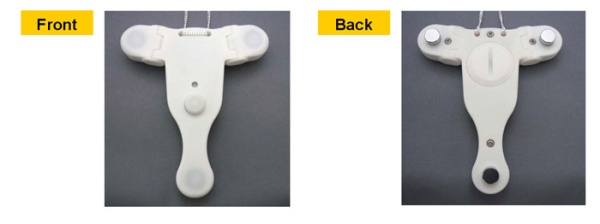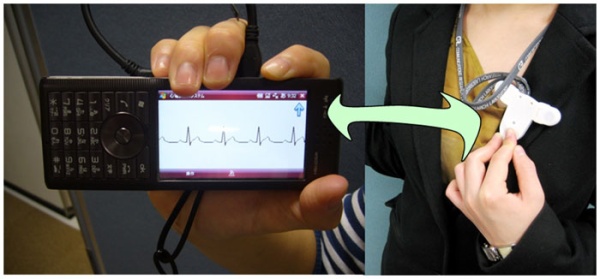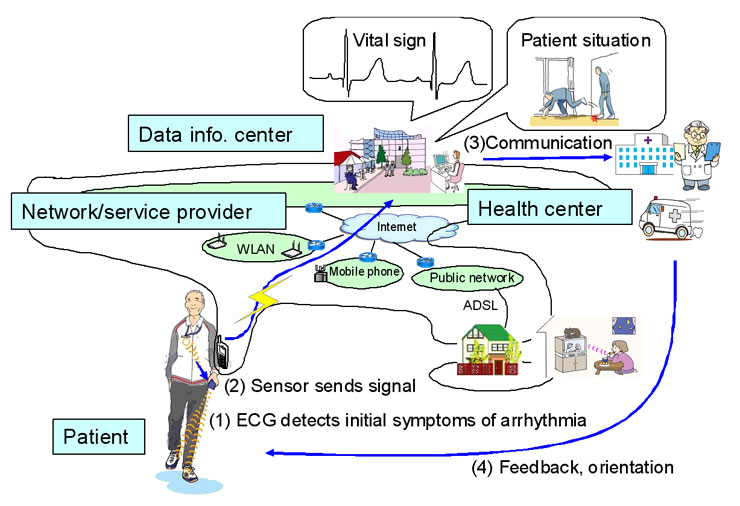Recent super-aged society faces critical situations in managing medical insurance systems and social security systems. Under these conditions, future healthcare/medical environments are being designed to enable wearable wireless networks, which will correct/manage biomedical data, to be integrated into wide-area service networks for telehealth. Wearable networks, such as Body Area Networks (BANs), as envisioned through recent advances in sensor device technologies, will be used to monitor health conditions continuously and assist medical treatments. Short-range wireless communications are applied to various applications, such as health monitoring during medical treatments, at home or on the road. Wearable sensors with wireless communication technologies are used in healthcare projects, but these projects mainly target for R&D and little focus on practical deployments. Power-efficient and ease-of-use sensor/BAN technologies were not studied thoroughly.
Home > Press Release > Low-power and Secure Wearable ECG over Body Area Network
- Towards Invisible and Dependable Health Watch-over Services -
We, the National Institute of Information and Communications Technology (NICT) have developed a wearable ECG and the Body Area Network (BAN). The ECG transmits electrocardiographic data 24 hours a day as well as measuring changes in body surface temperature and posture to a gateway, such as a cellular phone by using a short-distance wireless communication technology. The data can even be transmitted securely, using cryptographic keys dynamically generated by the patient's posture and biological data, which are unique to each user, not to tackle with the troublesome security setting. The weight of the device is less than 20 grams and light to wear like an accessory. It also equipped with dry-type electrodes and does not damage delicate skin. These technologies provide suitable sensors to each user for every day watch-over services and help medical treatments when needed.
We have succeeded in the development of ease-of-use wearable sensors, low-power consumption security*1 and short-range wireless communication technologies, and the BAN*2 technology which allows vital sensors to be plug-in dynamically following healthcare/medical requirements. We opened the door to practical uses of sensors and their power-efficient wireless networks. The network provides the interface to a plug-in sensor (Connectivity) and privacy in vital data transfer in the air (Confidentiality, Integrity and Availability). The ECG sensor weighs 20 grams and is capable of sending vital data 24 hours continuously by using the networking and security technologies. The data are sent to a gateway keeping the time order of the sensed data from sensors involved in a BAN. The time ordering feature provides detailed vital data analysis in the change of physical condition.
Target for ubiquitous healthcare and medical systems consisting of small and light sensors, we will further work with healthcare/medical people to investigate ⑴less strain sensors to users as much as possible, ⑵ much less power consumption in a short-range wireless network、⑶ open and flexible analysis platform for sensed data, and ⑷secure and open distributed healthcare data management.
The security key is dynamically generated by referencing the change of body movements, vital data and so on. This key generation reduces CPU execution in the sensor side. The power-efficient encryption/decryption standard (AES 128bits CBC) is also implemented.
BAN(Body Area Network)
A BAN is a network of wearable/implanted devices in the human body and is made up of a BAN coordinator and sensor nodes. The coordinator is a gateway enabling secure data exchange between the BAN and wide-area service networks.
A coordinator corrects vital data from sensors and uploads these to the services using available wide-area networks, such as 3GPP/2, WiMAX, and WiFi. Otherwise, it securely downloads instructions to a node, such as an actuator that is capable of interacting with the human body. The BAN standardization is done at the IEEE802.15.6 working group.
Appendix
Wearable ECG sensor uses patient's posture for encryption, transmits data over Body Area Network.



A user wears small and light sensors on the road and is watched by a remote watch-over service unconsciously.

Technical Contact
Masahiro Kuroda
Tel :+81-42-327-6886
E-mail: 















Public Relations
Sachiko HIROTA
Public Relations Office
Strategic Planning Department
Tel:+81-42-327-6923
Fax:+81-42-327-7587
E-mail: 

























